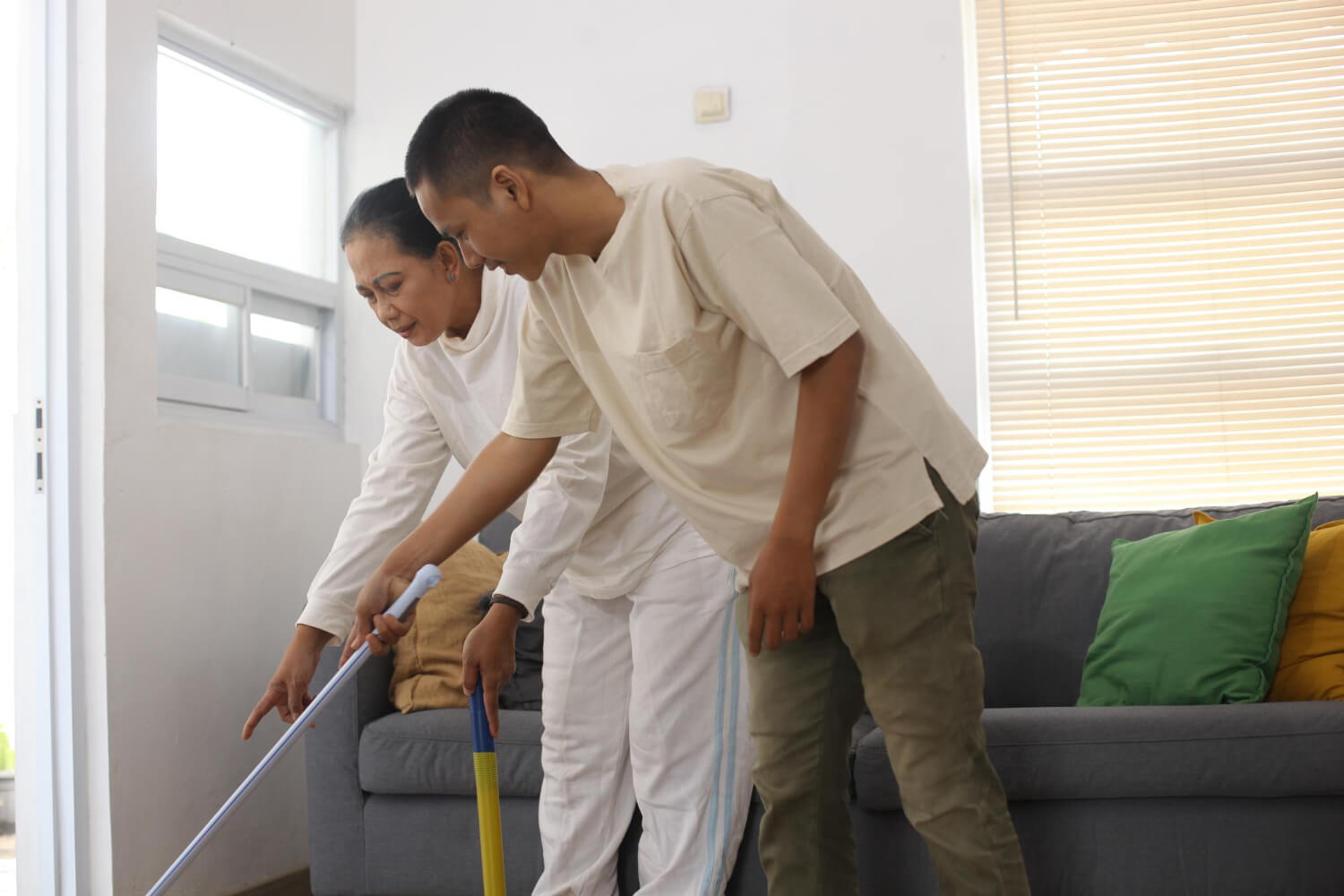Turning 65 brings many changes, especially if you’re receiving the Disability Support Pension (DSP). One of the most common questions people ask as they approach this age is: Will I lose my DSP when I turn 65?
The short answer is that in most cases, the DSP will end and you’ll be transitioned to the Age Pension. But the good news is, this shift is usually automatic and doesn’t require you to start from scratch. This blog explains what happens, what changes, and how to prepare for the transition.
If you or someone you support is approaching 65 and receiving the DSP, keep reading to understand exactly how the process works, what to expect, and how to avoid disruptions to your payments.
Understanding the Disability Support Pension (DSP)
The Disability Support Pension is a financial payment from Centrelink for people who have a permanent physical, intellectual, or psychiatric condition that prevents them from working full-time.
To qualify for DSP, you must:
- Be between 16 and Age Pension age (currently 67)
- Meet residency requirements
- Pass medical eligibility through an impairment rating system
- Be assessed as unable to work more than 15 hours per week within the next two years
DSP is designed to support people long-term, but it’s age-based. Once you reach the Age Pension age, you’re no longer eligible to stay on the DSP, even if your disability hasn’t changed.
DSP vs. Age Pension – What’s the Difference?
While both are income support payments, there are important distinctions:
| Feature | Disability Support Pension | Age Pension |
|---|---|---|
| Eligibility Age | 16 to 66 years and 6 months | From 66 years and 6 months |
| Medical Reviews | Yes, especially under 35 | No medical reviews required |
| Activity Requirements | May apply for under 35s | No activity tests |
| Work Capacity Limits | Must be unable to work 15+ hrs | No work capacity requirement |
| Payment Rates | Usually the same as Age Pension | Same base rates as DSP |
As the table shows, many of the requirements that apply to the DSP are removed once you move onto the Age Pension, which can make life easier for some people.
Does the Disability Support Pension Stop at 65?

Yes — the DSP does stop, but not abruptly. In most cases, you’ll be moved to the Age Pension automatically when you reach pension age. You will receive a letter from Centrelink about 13 weeks before your 65th birthday (or Age Pension age if it changes).
This letter will:
- Let you know your DSP is ending
- Invite you to apply for the Age Pension
- Explain what documents you may need to provide
You will not need to re-prove your disability, as your eligibility will now be based on your age, income, and assets—not your medical condition.
For most people, your payments will continue without interruption, as long as you complete the required steps when contacted by Centrelink.
What Happens When You Reach 65?
When you turn 65 (or the current Age Pension age), you transition off the DSP and onto the Age Pension. Centrelink will handle the change, but you’ll need to do the following:
1. Respond to Centrelink’s Letter
Around 13 weeks before your birthday, you’ll get a letter. This is your chance to start the Age Pension application. Even though it’s called an “application,” it’s mostly a confirmation process.
2. Provide Updated Information
You may need to confirm:
- Your bank details
- Any recent changes to income or assets
- Partner’s details (if applicable)
3. Transition to Age Pension
If everything is in order:
- You’ll automatically begin receiving the Age Pension the day your DSP ends
- Payments will continue on the same schedule (usually fortnightly)
- Most people notice no delay or gap
Related: Your Guide to Choosing NDIS Home Care Providers in Gold Coast
Key Differences Between DSP and Age Pension
While payment rates are usually the same, there are some important differences between the two pensions. Understanding them can help you avoid surprises.
Medical Reviews
DSP: Recipients under 35 may face ongoing medical reviews.
Age Pension: No medical assessments are required. Once approved, you continue to receive the payment as long as you’re eligible based on income and assets.
Work Rules
DSP: Limited to working under 15 hours per week to maintain eligibility.
Age Pension: You can work more hours and still receive a pension, subject to income limits.
Income and Asset Tests
Both pensions are subject to income and asset tests, but the Age Pension has slightly different rules.
Key Differences in Tests:
| Category | DSP | Age Pension |
|---|---|---|
| Work Test | Cannot work 15+ hours/week | Can work more with income test |
| Medical Review | May be required | None |
| Income/Assets Limits | Similar thresholds | Similar thresholds |
Note: If you have a partner, your joint income and assets will be assessed.
Rent Assistance and Supplements
Both payments include:
- Rent Assistance (if renting privately)
- Pension Supplement
- Energy Supplement
These additional supports are carried over to the Age Pension automatically if you’re still eligible.
What If You’re Still Working or Have Other Income?

Many people nearing retirement age still work part-time or have some form of passive income. This can affect how much Age Pension you receive.
Income Test for Age Pension
The income test looks at how much you and your partner earn from:
- Employment
- Investments (interest, dividends)
- Superannuation income streams
- Business income
Current thresholds (as of July 2025):
| Situation | Full Pension if Income Under | Part Pension if Income Below |
|---|---|---|
| Single | $204 per fortnight | $2,444 per fortnight |
| Couple (combined) | $360 per fortnight | $3,737 per fortnight |
If your income goes above the limit for a full pension, your payment will reduce by 50 cents per dollar over the threshold.
Asset Test for Age Pension
This applies to things like:
- Savings
- Property (excluding your main home)
- Cars, boats, caravans
- Shares and managed funds
If your total assets are above the cut-off, your payment may reduce or stop.
| Situation | Full Pension if Assets Under | Part Pension if Assets Under |
|---|---|---|
| Single (homeowner) | $301,750 | $674,000 |
| Couple (homeowners) | $451,500 | $1,012,500 |
Tip: These thresholds change every year, so check the latest figures on the Services Australia website.
What Should You Do Before Turning 65?

Here are some practical steps to make the transition as smooth as possible:
- Check your details with Centrelink: Make sure your bank, income, and contact details are up to date.
- Start preparing 3–4 months in advance: Don’t wait until the last minute to read Centrelink’s letter.
- Gather documents early: If you have income from work or investments, keep recent payslips, statements, or declarations ready.
- Ask questions: Call Centrelink or visit a Services Australia office if anything is unclear.
- Seek financial advice: A financial counsellor or aged care advisor can help you understand the effect on your super or other income.
Other Supports After Age 65
Once you turn 65, your eligibility for certain services might change.
What Happens to Your NDIS Plan?
Most NDIS participants become ineligible once they reach 65, unless:
- They were already receiving NDIS before turning 65
- They choose to remain under the NDIS instead of moving to My Aged Care
If you joined NDIS before 65:
You can stay on the scheme and continue using your plan as long as you remain eligible.
If you apply after 65:
You’ll usually be directed to My Aged Care, which provides similar supports through aged care packages rather than disability services.
Moving to My Aged Care
After 65, your disability support may shift to:
- Commonwealth Home Support Program (CHSP)
- Home Care Packages (HCP)
- Residential aged care (if needed)
This may include help with:
- Personal care
- Meals and shopping
- Transport to appointments
- Physiotherapy or OT
- Nursing care
You’ll need to complete an ACAT assessment to determine eligibility for aged care services.
Conclusion
Turning 65 doesn’t mean losing your financial or personal support. It simply means that your DSP ends and you begin receiving the Age Pension. For most people, this transition is smooth, automatic, and comes with fewer obligations.
While some things change—like income limits and medical reviews—you will continue receiving regular support. The best way to prepare is to stay informed, update your details with Centrelink, and seek help early if anything is unclear.
If you’re supporting a family member or client on DSP, make sure they know what to expect as they approach pension age. Being prepared avoids stress and keeps payments flowing without delay.
